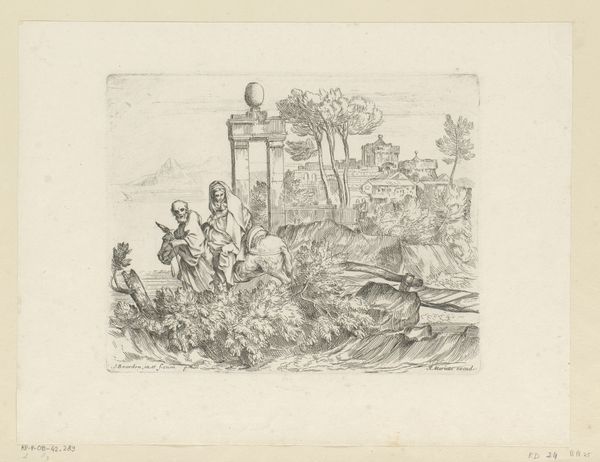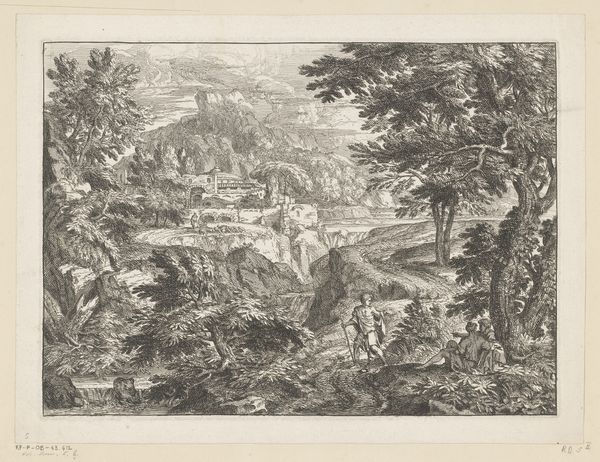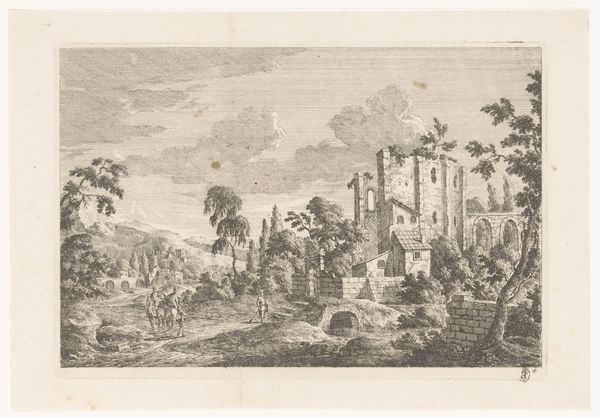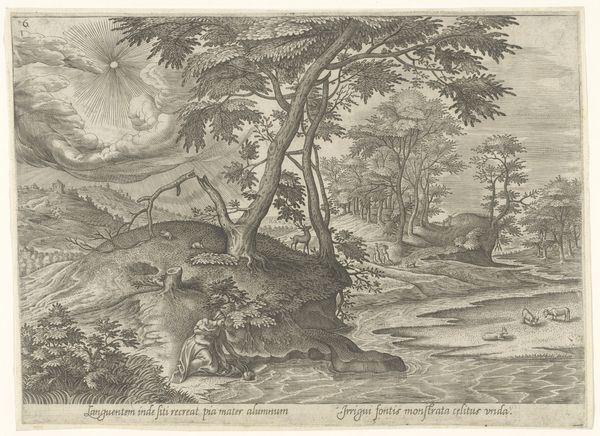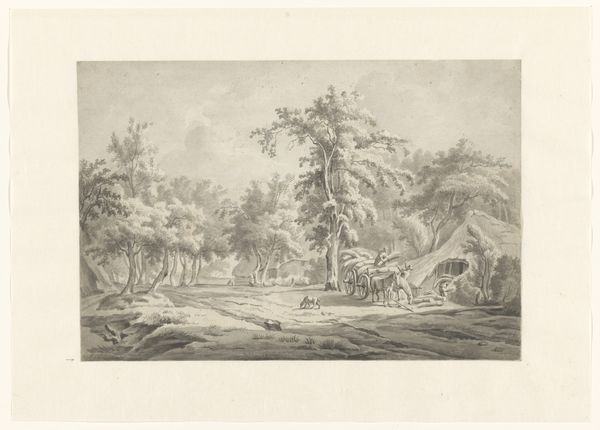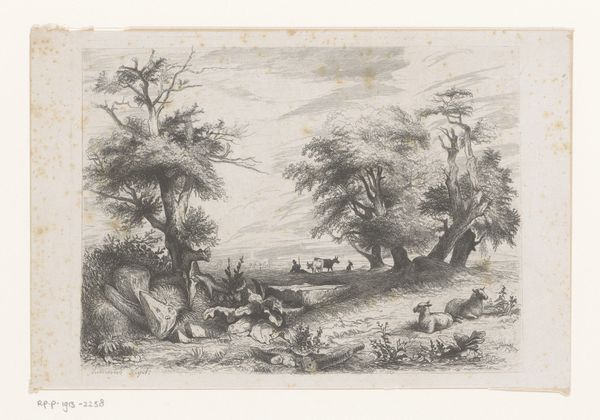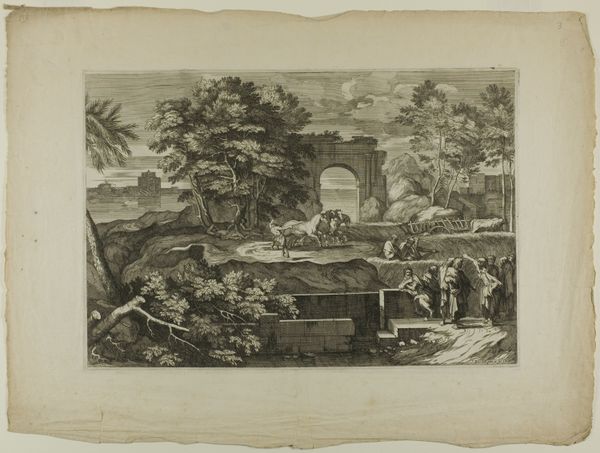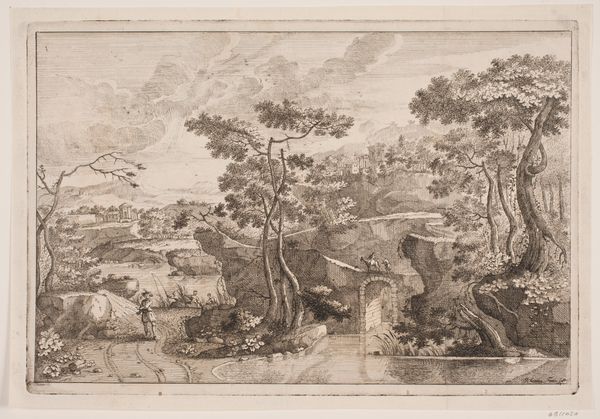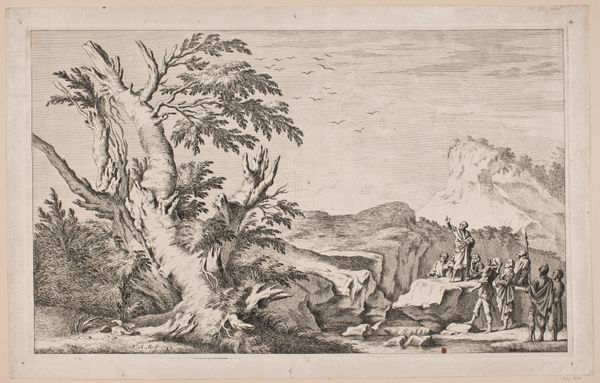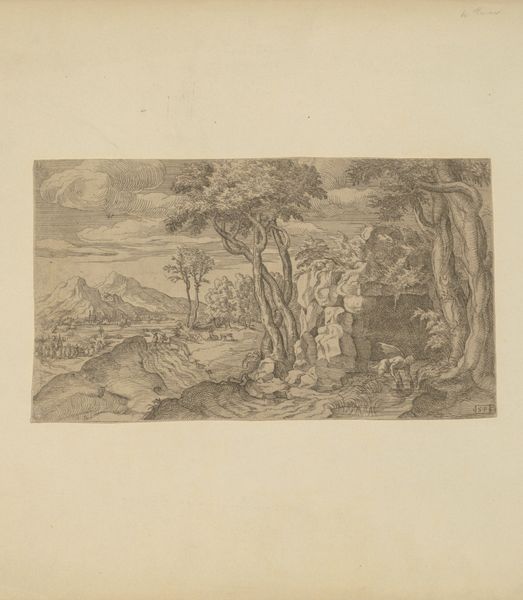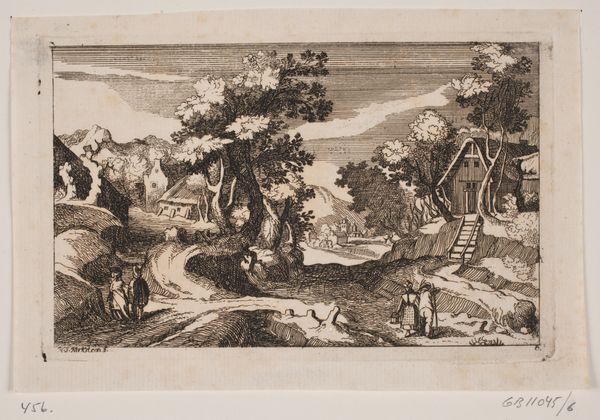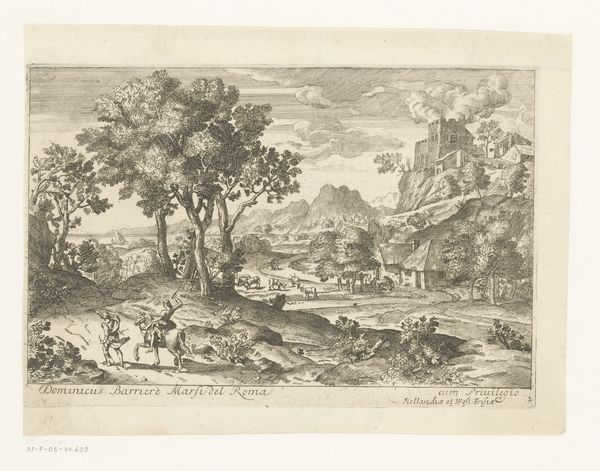
#
light pencil work
#
pen sketch
#
pencil sketch
#
old engraving style
#
personal sketchbook
#
sketchwork
#
ink drawing experimentation
#
pen-ink sketch
#
sketchbook drawing
#
pencil work
Dimensions: height 160 mm, width 281 mm
Copyright: Rijks Museum: Open Domain
Étienne Dupérac made this landscape with ruins print, held at the Rijksmuseum, in the late 16th century. The image depicts crumbling classical structures overtaken by vegetation, set against a hazy, panoramic landscape. Dupérac was active in Rome, and this print reflects the 16th-century obsession with the city's ancient past. We see obelisks, colonnades, and archways, all decaying, which suggests a reflection on the transience of empires and the inevitable triumph of nature. This theme resonated in a period marked by religious upheaval, political instability, and emerging scientific understandings of the world. The ruins can be seen as a metaphor for the waning authority of the Catholic Church or even the decline of the old feudal order. To truly understand this print, one must delve into the artistic conventions, social anxieties, and intellectual currents of the late Renaissance. Examining architectural treatises, contemporary accounts of Rome, and the artist's biography can provide a richer understanding of the work. Art like this serves as a mirror reflecting not just the artist's vision, but also the hopes and fears of an era.
Comments
No comments
Be the first to comment and join the conversation on the ultimate creative platform.
